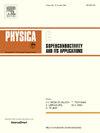当超导体正常时,超电流是如何消失的?
IF 1
3区 物理与天体物理
Q4 PHYSICS, APPLIED
Physica C-superconductivity and Its Applications
Pub Date : 2025-06-03
DOI:10.1016/j.physc.2025.1354747
引用次数: 0
摘要
在外加磁场作用下,在I型超导体表面附近流动的超电流携带动能和角动量。当宏观物体过渡到正常状态,磁力线开始穿透它时,法拉第定律就会产生与磁通量变化相反的电流,这些电流总的携带的动能和角动量比初始状态下的超电流大许多个数量级。这些电流逐渐消失,它们的角动量被传递给整个身体,而不产生熵。传统的超导理论并不能解释这是如何发生的。空穴超导的另一种理论是:它需要具有负有效质量的载流子。我们的理论还解释了为什么在场冷却条件下,通量通常被困在I型超导体中。本文章由计算机程序翻译,如有差异,请以英文原文为准。
How do supercurrents die down when a superconductor goes normal?
The supercurrent flowing near the surface of a type I superconducting body in the presence of an external magnetic field carries kinetic energy and angular momentum. When the macroscopic body transits into the normal state and magnetic field lines start penetrating it, Faraday’s law induces electric currents opposing the change in magnetic flux, that in the aggregate carry kinetic energy and angular momentum many orders of magnitude larger than the supercurrent in the initial state. These currents die down, and their angular momentum is transferred to the body as a whole, without generation of entropy. The conventional theory of superconductivity does not explain how this happens. The alternative theory of hole superconductivity does: it requires carriers with negative effective mass. Our theory also provides an explanation for why flux is generically trapped in type I superconductors under field cooling conditions.
求助全文
通过发布文献求助,成功后即可免费获取论文全文。
去求助
来源期刊
CiteScore
2.70
自引率
11.80%
发文量
102
审稿时长
66 days
期刊介绍:
Physica C (Superconductivity and its Applications) publishes peer-reviewed papers on novel developments in the field of superconductivity. Topics include discovery of new superconducting materials and elucidation of their mechanisms, physics of vortex matter, enhancement of critical properties of superconductors, identification of novel properties and processing methods that improve their performance and promote new routes to applications of superconductivity.
The main goal of the journal is to publish:
1. Papers that substantially increase the understanding of the fundamental aspects and mechanisms of superconductivity and vortex matter through theoretical and experimental methods.
2. Papers that report on novel physical properties and processing of materials that substantially enhance their critical performance.
3. Papers that promote new or improved routes to applications of superconductivity and/or superconducting materials, and proof-of-concept novel proto-type superconducting devices.
The editors of the journal will select papers that are well written and based on thorough research that provide truly novel insights.

 求助内容:
求助内容: 应助结果提醒方式:
应助结果提醒方式:


